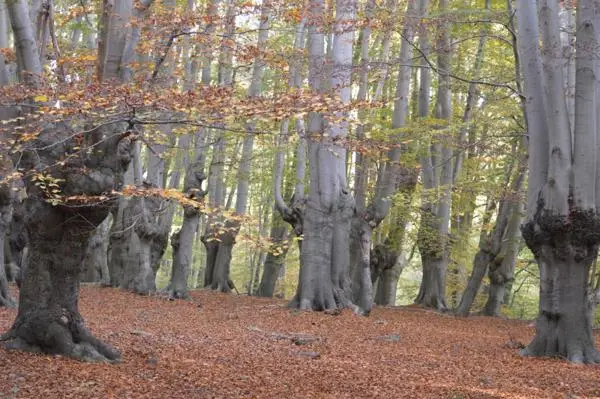Habitat Restoration Programme
Our Habitat Restoration Programme works to enhance biodiversity by restoring Epping Forest’s diverse mosaic of habitats, regenerating the forest floor, and revealing veteran trees so they can live longer. You can learn more about this programme below, or follow our progress as it develops by exploring our interactive maps below or on StoryMaps.
Historic Management
Epping Forest contains internationally important habitats and is recognised as a Special Area of Conservation. The patchwork of grasslands, heathlands, ponds and bogs scattered throughout an area of trees known as wood pasture has been present here for at least a thousand years. During that time many trees were periodically cut at head height in a traditional practice called pollarding: this encourages vigorous tree growth, keeps trees short and tends to prolong their lifespans. Pollards allow a greater amount of light to reach the forest floor enabling other plants to grow, creating a ‘pasture’ on which animals can graze.
Biodiversity
Epping Forest contains over 50,000 veteran oak, beech and hornbeam pollards. Gloriously knobbly and full of nooks and crannies, these trees provide homes to a vast array of wildlife; because pollards tend to be long-lived, they offer a haven for organisms that are slow to move and colonize, allowing them time to establish. Our wood pasture legacy is an important reason why Epping Forest is particularly rich in insects and fungi and such a vital refuge for threatened species.
Loss of pollarding and grazing
At the end of the 19th century pollarding in the Forest stopped, and during the 20th century the number of grazing cattle declined steeply.

Less grazing meant young trees and scrub increasingly filled the Forest’s open habitats reducing the extent of ancient grasslands and glades. The sudden absence of pollarding led to denser stands of trees and holly blocking light leading to the loss of the once lush carpet of forest floor plants. The forest became a darker, less biodiverse place.
Modern Management
Consistent management of Epping Forest’s veteran pollards began again in the 1980’s for the first time since the Victorian period. Followed in the 2000’s by the reintroduction cattle for conservation grazing. This restoration work has benefited hundreds of hectares helping forest floor plants to return and thrive.
Building on those decades of careful work our current programme aims to:
Restore – ancient grassland, heathland and ponds to improve the condition of these vital habitats.
Regenerate – the forest floor giving the seedbank buried there a chance to grow again.
Reveal – the heavily shaded veteran pollards, giving them room and light to help them live longer and create new ones ready to become veterans of the future.
By bringing more light to parts of the Forest we can help plants and animals thrive.
This programme receives funding from a Defra Countryside Stewardship grant and contributes to the Epping Forest Management Strategy which meets part of the City of London Corporation’s Corporate Plan and contributes to the government’s 25 Year Environment Plan.
